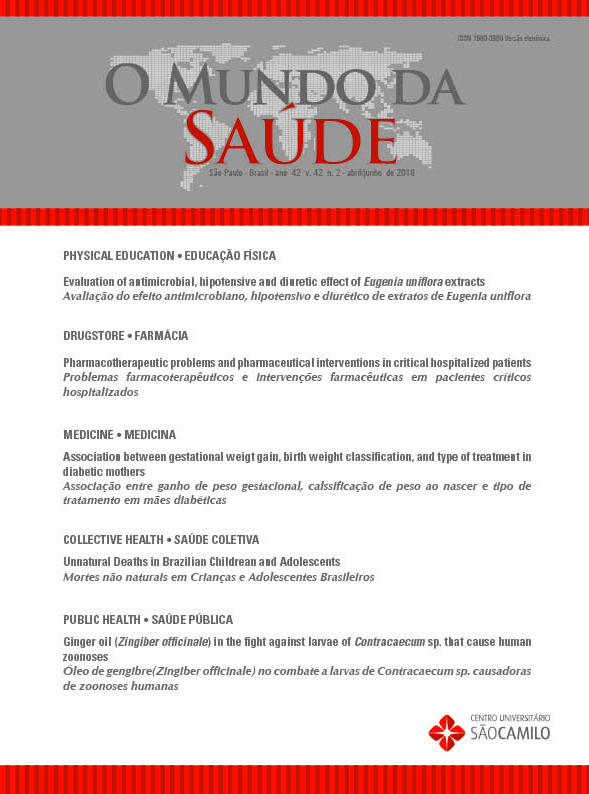Pharmacotherapeutic problems and pharmaceutical interventions in critical hospitalized patients
DOI:
https://doi.org/10.15343/0104-7809.20184202369392Keywords:
Pharmaceutical care, Use of Medications, Intensive Care Units, Patient-Centered CareAbstract
A critical patient is one who is seriously ill and needs a multi-professional team dedicated to their intensive care. Because ample prescription medication is involved, such patients are more susceptible to pharmacotherapeutic problems. The purpose of the study was to evaluate the profile of pharmacotherapeutic problems (PP) and pharmaceutical interventions (PI) performed by residents of a Multi-professional Residency Program in Critical Patient Care. This was a descriptive and quantitative study carried out by evaluating pharmaceutical care records completed by residents caring for critical patients who were hospitalized at a teaching hospital in Campo Grande, MS, from March to August 2016. The study was approved by the Ethics Committee of the Federal University of Mato Grosso do Sul, opinion No. 1,371,325. The drug prescriptions of 60 patients with an average age of 60.2 (± 16.6) years were evaluated. A total of 218 PP were identified, with an average of 3.6 (± 1.4) PP per participant. Twenty-six patients (43.3%) had 4 or more PP. The most frequent were: medication not available due to lack of stock (n=48; 22%), existence of a more adequate/available therapeutic alternative (n=37; 17%), and need for laboratory monitoring (n=22; 10.1%). A total of 154 PI, 2.56 (± 0.7) per participant, were performed. The most frequent were: indication of a more adequate/available therapeutic alternative (n=37; 24%), orientation on drug-drug incompatibility (n=16, 10.4%), and orientation on drugdrug interaction (n=12; 7.8%). Most PI (n=133; 86.4%) were directed to physicians and were accepted without change (n=96; 62%). The results showed a high incidence of PP and PI in critical patients.






























